Weekly Index
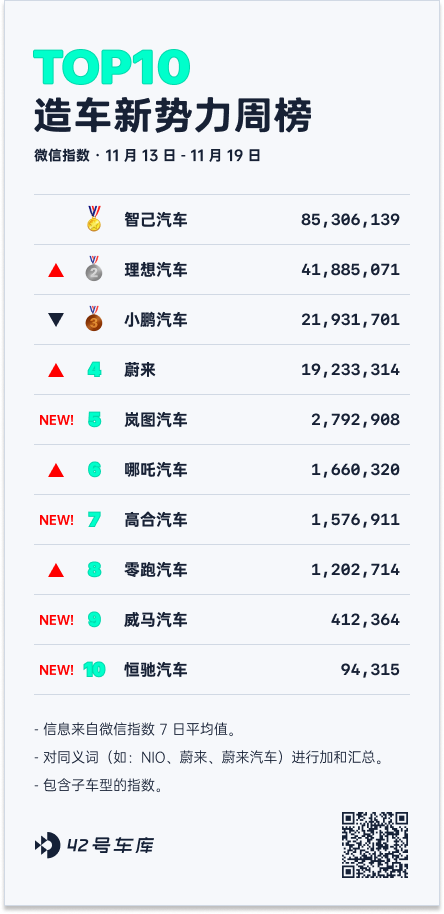
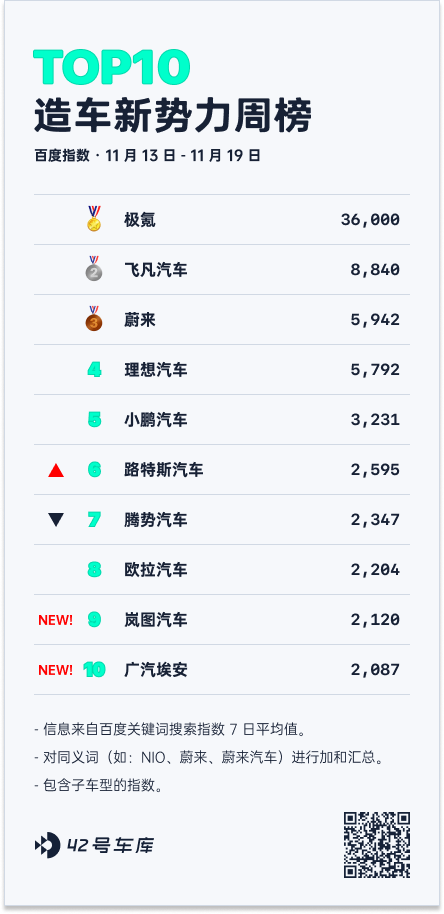
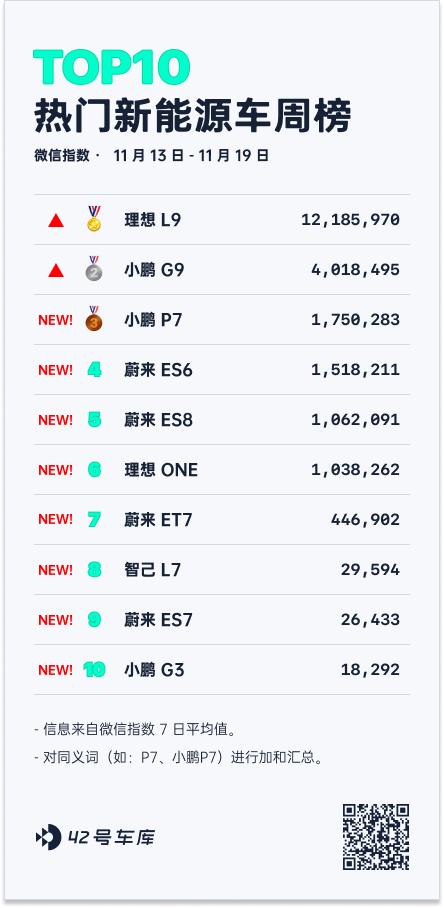

Weekly Highlights
Local brands of new energy sedans shined at the Guangzhou Auto Show
On November 17th, the 21st Guangzhou International Automobile Exhibition opened. At this auto show, numerous local new-energy vehicles made their appearance, including the avatr 12, ZEEKR 007, GEELY E8, LUXEED S7, and more. The sedan market may become even more dynamic in the upcoming 2024.
- avatr 12: More than 15,000 units ordered within the first 6 days of launch
avatr 12 offers three model configurations with a price range from 300,800 to 400,800 yuan, and can enjoy up to 30,000 yuan of limited-time privileges. In just 6 days since its launch, avatr 12 has received more than 15,000 orders.
In terms of intelligent systems, avatr 12 is equipped with the Hongmeng cockpit system developed based on HarmonyOS 4 and Huawei’s intelligent driving system HUAWEI ADS 2.0. Among them, ADS 2.0 integrates 3 lidars and 19 active safety functions. It breaks free from the dependence on high-precision maps and supports AEB automatic emergency braking, GAEB irregular obstacle emergency braking and other functions, demonstrating the vehicle’s competitiveness in the field of intelligent safety.
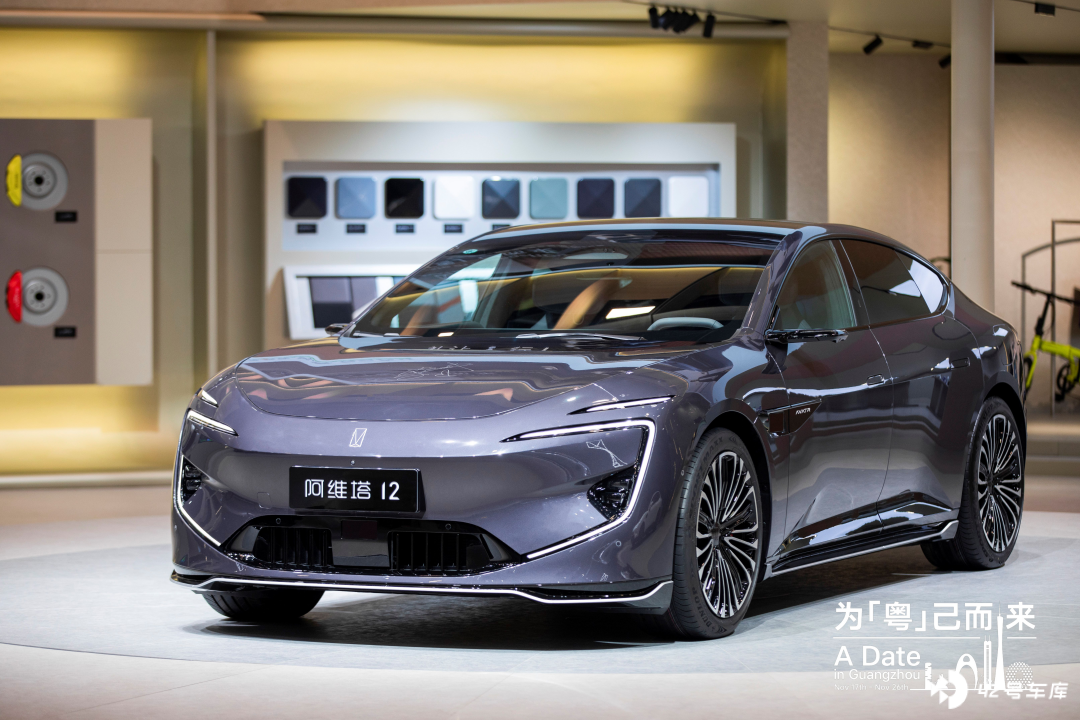
In terms of appearance, the new car adheres to the overall design concept of “Future Elegance” and innovatively adopts the ultimate coupé style with full-angle vision, a hatchback tail with full muteness and no stern windows, and all-weather real-time ultra-clear electronic rear-view mirrors.
For power endurance, the new car uses Huawei’s DriveOne high-voltage electric drivetrain system. The maximum power of the dual motors reaches 425 kw. While bringing superior performance, the CLTC comprehensive mileage is 700 kilometers.
2. ZEEKR 007: Pre-sale price starts at 224,900 yuan, delivery will begin in January next year
At the Guangzhou Auto Show, ZEEKR announced that the pre-sale price of ZEEKR 007 starts at 229,900 yuan. Consumers can enjoy a 6,000 yuan car purchase discount by paying a 1,000 yuan deposit. In other words, the pre-sale price after deduction starts at 224,900 yuan. The official said that this model will be officially launched and delivered to consumers in January 2024.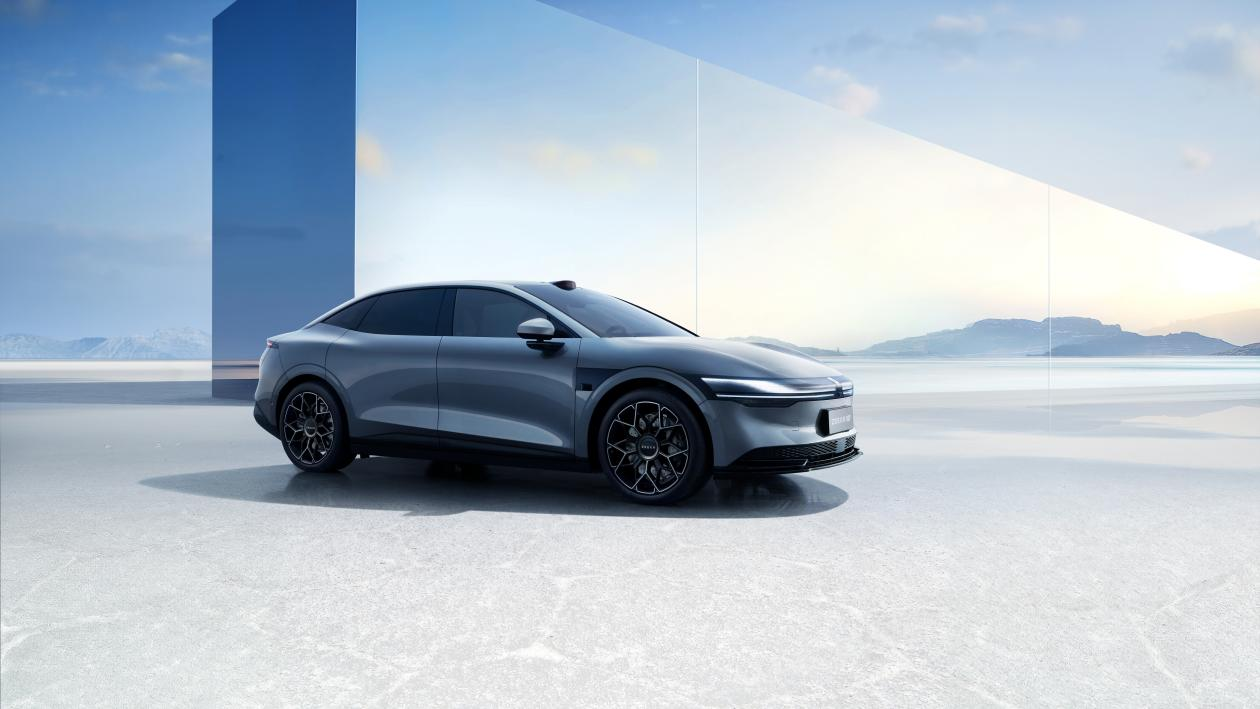
In terms of body size, the ZEEKR 007 measures 4,865/1,900/1,450 mm (L/W/H), with a wheelbase stretching to 2,928 mm.
Power-wise, the ZEEKR 007 comes standard with a high-performance 800V electrical architecture and the rear motor’s maximum power can reach 310 kilowatts. Performance-wise, the rear-wheel-drive model accelerates from 0 to 100 km/h in 5.4 seconds while the four-wheel-drive model can complete the same sprint in 2.84 seconds, demonstrating potent power performance. The base model of the ZEEKR 007, the CLTC, boasts a range of 688 km, while the long-range version can reach up to 870 km.
On the technology side, the car is equipped with an advanced smart cockpit computing platform, large AI model technology, 35.5-inch AR-HUD head-up display, a 15.05-inch 2.5K OLED central control screen, and a 21-speaker 7.1.4 Dolby panoramic sound system.
In the field of intelligent driving, the ZEEKR 007 comes standard with NVIDIA DRIVE Orin SoC intelligent driving system-level chip with a computing power of 508 TOPS. It is equipped with one LiDAR, 12 high-definition cameras, and five millimeter-wave radars, and the high-speed NZP leading function implemented based on this hardware will go live after vehicle delivery.
- GEELY Galaxy E8
On November 17, the GEELY Galaxy E8 made its public debut at the Guangzhou Auto Show. As the first pure electric sedan in the Galaxy series, the Galaxy E8 is built on the SEA architecture and is also the first pure electric sedan based on the SEA architecture. Thanks to the high extensibility and flexibility of the SEA architecture, the Galaxy E8 features a design with a luminous front face and achieves a super low drag coefficient of 0.199.
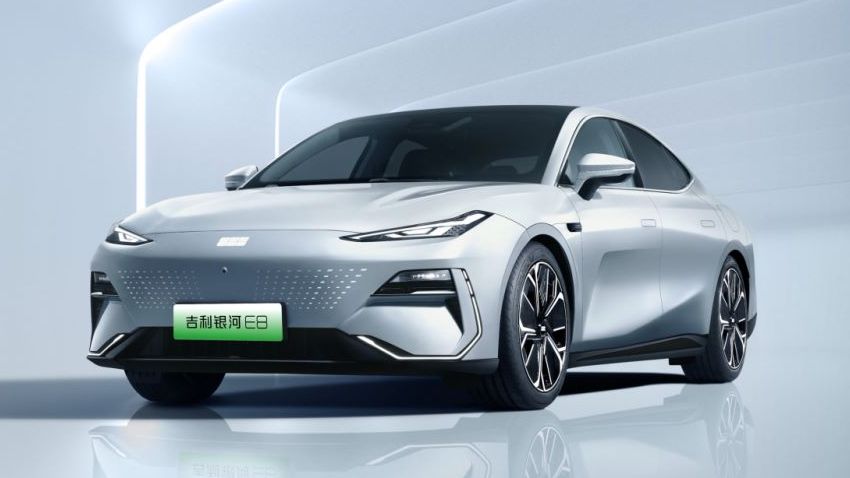
The car’s interior is also noteworthy, equipped with a high-definition 45-inch 8K screen and a Qualcomm Snapdragon 8295 chip, further enhancing the cockpit experience of the GEELY Galaxy E8.
In terms of power and endurance, the new car adopts 800 V high voltage quick charging technology and silicon carbide electric drive, achieving fast charging capacity. With 5 minutes of charging time, it can provide approximately 180 km of cruising range, and the maximum cruising range can reach 665 km.
- LUXEED S7
A week before the Guangzhou Auto Show, the LUXEED S7 was officially launched and pre-sale started, with four models available and pre-sale prices starting at 258,000 yuan. Advance orders also come with 40,000 yuan in optional equipment rights. As the first pure electric sedan product of Huawei’s selected cars, and the first model co-operated by Huawei and Chery, the LUXEED S7 is mainly led by Huawei. It includes a full 800 V high-voltage platform, Huawei ADS 2.0 smart driving, and HarmonyOS 4 smart cockpit.At the Guangzhou Auto Show, Luxeed S7 and AITO’s multiple models were jointly exhibited at the HarmonyOS Auto booth.
Also, Richard Yu revealed to the media that, following AITO and Luxeed, two more brands would be launched in the future, both in cooperation with BEIJING and JAC.
XiaoMi’s Two New Cars Unveiled, Named SU7
On November 15, XiaoMi Auto landed at MIIT with two models, SU7 and SU7 Max, both all-electric sedans. Visually, the SU7 lacks a rooftop LIDAR, while the SU7 Max has a single LIDAR on its roof.
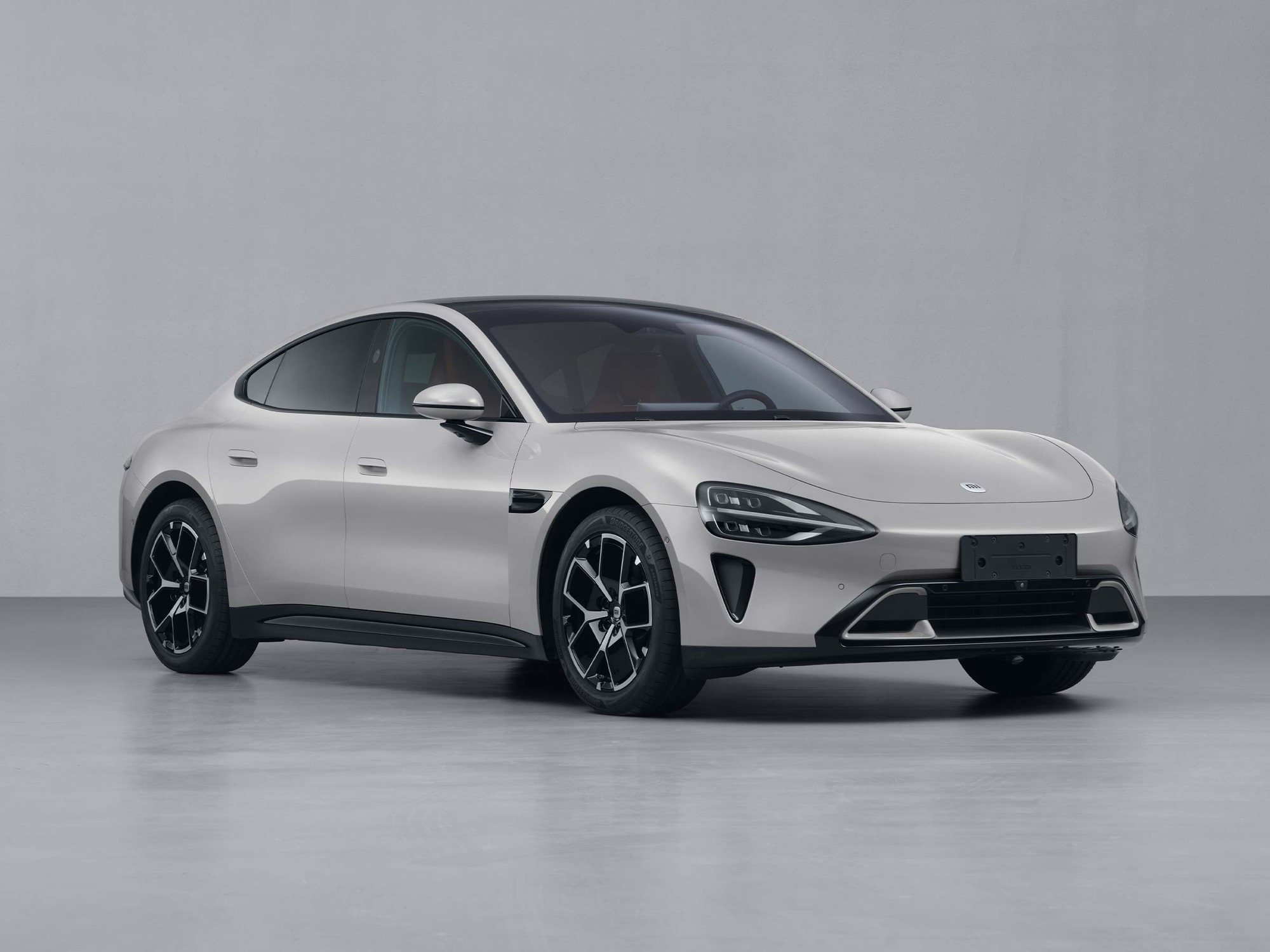

A few interesting details:
- The rear end bears the “BEIJING XiaoMi” logo, the model name is SU7. The company is named Beijing Automobile Group Off-road Vehicle Co., Ltd.
- Exterior dimensions are 4,997 x 1,963 x 1,455mm.
- Top speed is 210 km/h.
- Uses 220 kW motor from United Automotive Electronics Co., Ltd.
- Optional different style sunroof glass, windscreen, LIDAR, rim designs, colored brake calipers, etc.
LI MEGA Makes Its Debut At The Guangzhou Auto Show
Apart from sedans, the MPV market is also quite significant. LI MEGA’s debut was held at the Guangzhou Auto Show, which is extremely important for both the industry and LI.
Firstly, this is the MPV model with the globally lowest drag coefficient, only 0.215. Also, this is LI’s first pure electric vehicle and their first MPV.
Specifications-wise, it is 5,350 mm long, 1,965 mm wide, 1,850 mm high, and has a 3,300 mm wheelbase. The tire size is 245 / 60 R18. The engine from Huawei Technology Co., Ltd / United Automotive Electronics Co., Ltd., and generates power up to 155 / 245 kW. Top speed is 180 km/h. The seat arrangement is 2 / 2 / 3, the second-row seats can slide forwards and backwards, the third row of seats can fold back onto the cushion, and can flip forward 85° in entirety.
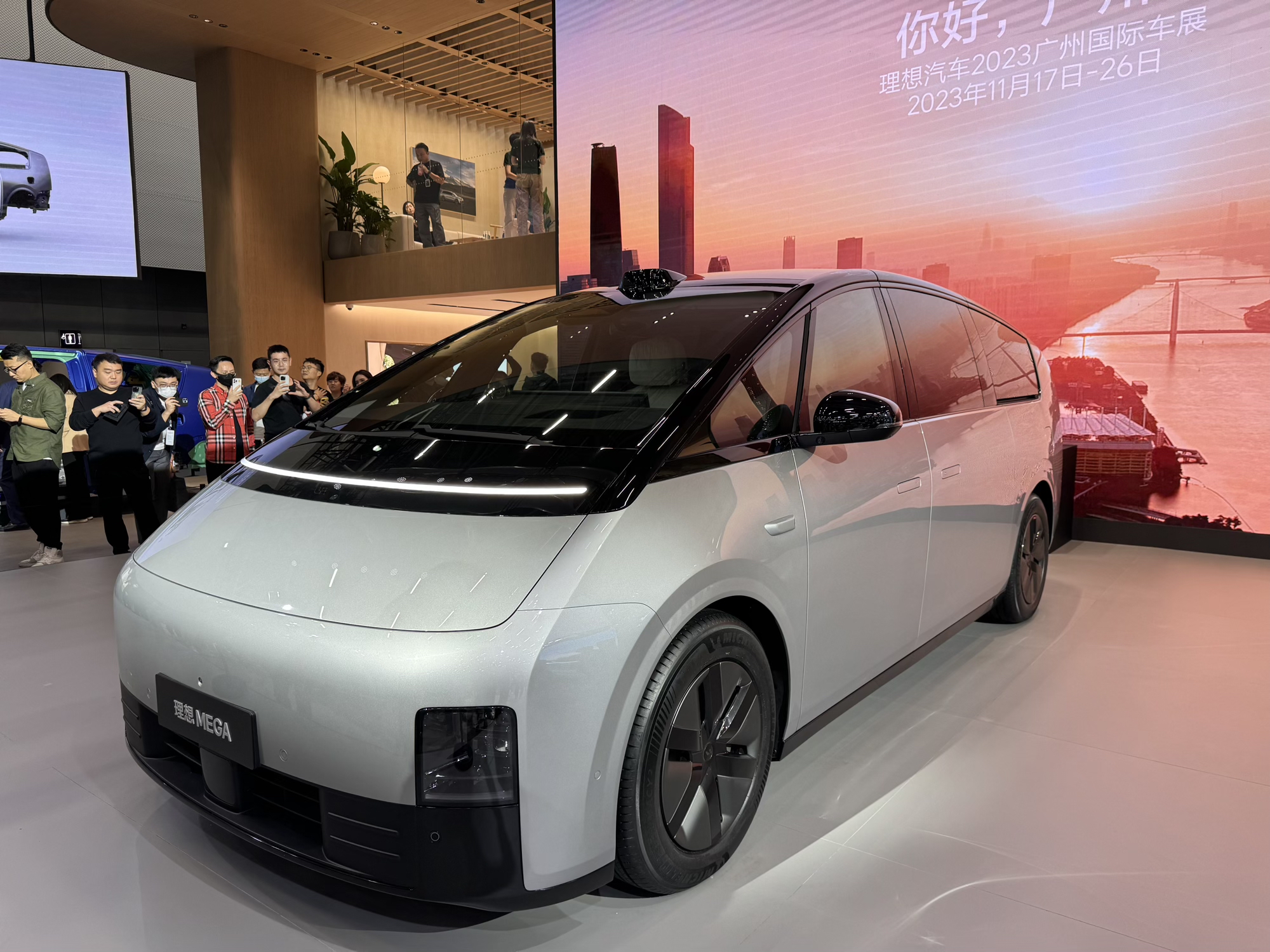
During the Guangzhou Auto Show, LI released more crash safety information.
- 88 kph rear-end 70% offset crashes third-row 0 intrusion;
- The first MPV in China to get G in 25% offset crashes on both driver and passenger sides.3. B-pillar collision survival space is 270 mm, exceeding the national standard by 90 mm.
- The vehicle is equipped with 9 airbags, including a dual-chamber far-end airbag for the front row.
In addition, MEGA comes standard with dual-chamber air suspension + CDC damping shock absorbers. LI also announced that MEGA will be the quietest MPV globally.
NIO Pushes Battery Swap Guide Feature to Users
On November 15, NIO rolled out the Banyan·Rong 2.2.0 CN system update, aiming for vehicles with current versions of Banyan 2.0.8 CN or above and the registered NT2 models. A prominent feature of this update is the Pilot Swap (PSP) Beta service offered at motorway service areas.
Specifically, when the vehicle is driving on the highway and NOP+ is on, the vehicle can autonomously drive off the main highway via motorway exit ramps, enter the designated service area, finish the battery swap at the swap station based on navigation and order status, and rejoin the highway, continuing with NOP+ on.
During this process, the system supports scenarios like battery swap queue waiting, obstacle bypassing, and pedestrian avoidance. PSP seamlessly connects with NOP+ and deeply integrates the NIO battery swapping experience, realizing complete automation and end-to-end navigation during highway battery swaps.
Officially, the PSP functionality at each service area’s battery swap station will be opened up gradually. Currently, a total of 29 swap stations nationwide support PSP.
It’s worth noting that this feature defaults to being switched off. Users can manually switch it on or off via vehicle settings. When being switched on for the first time, users need to watch an instructional video by scanning a QR code on NIO’s App. Upon completing the learning process, the feature is then activated.
Moreover, NIO stated that due to the complex nature of motorway service areas at night, this feature will only run daily from 7:00 to 19:00.
Xpeng Announces Third Quarter Financial Report
The core data of Xpeng’s third quarter report are:
- Q3 revenue was RMB 8.53 billion, a YoY increase of 25% and a QoQ increase of 68.5%.
- Q3 total deliveries were 40,008 units, a QoQ increase of 72.4%.
- Q3 gross margin was -2.7%, compared to -3.9% in Q2 of 2023.
- Q3 auto gross margin was -6.1%, compared to -8.6% in Q2 of 2023.
- Q3 net loss was RMB 3.89 billion.
- Q3 R&D expenditure was RMB 1.31 billion, taking the cumulative R&D investment beyond RMB 18.1 billion.
- Q4 deliver estimation is between 59,500 and 63,500 units.
- Q4 total revenue is expected to be between RMB 12.7 billion and RMB 13.6 billion.
- At the end of the third quarter, the cash reserve was RMB 36.48 billion.
Regarding the financial report, He Xiaopeng stated that starting from Q3 this year, Xpeng Motors has entered a preliminary positive cycle, but this series of changes will only come into effect in 2024 and beyond. By next year’s fourth quarter, the company will enter a high-speed development cycle.Quick Comment:
For Xpeng Motors, the upcoming crucial leverage point lies in intelligent driving.
After all, judging from the overall industry trend, intelligent driving is becoming an essential factor in consumers’ car-buying decisions. The next five years will be marked by the large-scale popularity of assisted intelligent driving. From this point, investment and contribution to intelligence cabin and intelligent driving of Xpeng Motors will give it an advantage.
In addition, there are many ascending driving factors for Xpeng Motors, such as its collaborations with Volkswagen and Didi, but the effectiveness of these collaborations will be tested by their tangible results.
Overall, Xpeng Motors is still in the initial stage of recovering from a slump. Revenue, delivery volume, gross margin, and automobile gross margin are gradually improving, but there is still a lot of room for growth.
Of course, this process will require more time and Xpeng Motors will need to steadily forge ahead to reach a positive cycle by the fourth quarter of 2024 – we will wait and see.
This article is a translation by AI of a Chinese report from 42HOW. If you have any questions about it, please email bd@42how.com.
